|
|

|
|
� |
|
| � |
|
|
� |
|
| � |
 |
Brazil
has the sixth largest population of
any country in the world, and over
time, different peoples have come
to live in this vast country. That's
why there is no such thing as a typical
Brazilian person today.
|
|
|
� |
|
|
� |
|
|
|
� |
|
| � |
Click
on the picture to find out why Brazil has
such a mixed population.
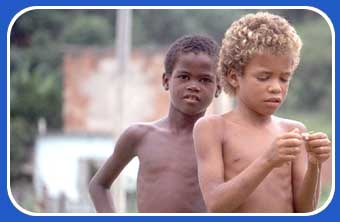
[Pic: � Sean
Sprague/Panos Pictures]
|
|
� |
|
|
� |
|
|
|
� |
|
| � |
If
Brazil has the sixth largest population,
can you guess which countries make up
the Top 5?
 for the answer.
for the answer. |

|

|
The original
people living in Brazil were Indians.
Today, there are still 200 different
groups of Indians. Between them, they
speak 180 different languages! Some
Indians live in the depths of Brazil's
forests. They have never come into
contact with other people, and we
still know little about them.
|
| One
of the best known Indian groups are
the Yanomami. They live in the Amazon
rainforest spread over an area the size
of England and Wales. Here, they clear
patches of forest for their homes. Twenty
families live side by side in a big
circular house called a Yano. The Yanomami
grow fruit and vegetables amongst the
trees, and they hunt animals like anteaters
to eat, and fish in the Amazon's many
tributaries.
|

|
|
|
� |
|
|
� |
|
|
|
� |
|
| � |
A
Yanomami family

� Victor Englebert 1980/Survival
|
|
� |
|
|
� |
|
|
|
� |
|
| � |
| People
like the Yanomami have learned how to
use different plants and trees without
causing lasting damage to the forest
environment. This way, their lifestyle
is sustainable.
To give you an idea of how they use
the forest sustainably, roll your cursor
over the pictures below: |

|
If you want
to know more about the Yanomami, visit www.amanakaa.org/yanomami/about.htm
 |
Look at
the pictures below which show how one
man is using the forest. What is he
doing? How is his use of the forest
sustainable?
Have you ever made something from natural
materials? |
|
|
� |
|
|
� |
|
|
|
� |
|
| � |
�Simon
Scoones/Worldaware
|
|
� |
|
|
� |
|
|
|
� |
|
| � |
 |
Life in a Brazilian
city like Rio de Janeiro is very different
from life in the Amazon rainforest. But like
the people in the Amazon region, those who
live in the poor neighbourhoods of Rio have
to make the most of what's around them. |
|
� |
|
|
� |
|
|
|
� |
|
| � |
Sugar
Loaf view, Rio
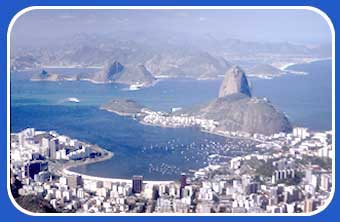
�Simon Scoones/Worldaware
|
|
� |
|
|
� |
|
|
|
� |
|
| � |
If
you would like more pictures showing different areas
of Rio de Janeiro, visit http://ipanema.com/pictours/home.htm
 |
Many people leave
the countryside and come to the cities in
search of work and to find better services
like schools and hospitals. When they first
arrive, poorer families may have to build
a house from scratch on unoccupied land. With
more people moving in, these housing areas
called 'favelas' grow and grow. |
|
� |
|
|
� |
|
|
|
� |
|
| � |
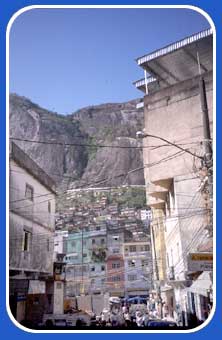 �Simon
Scoones/Worldaware
�Simon
Scoones/Worldaware
|
Rocinha
is the oldest and largest favela in
Rio de Janeiro. It began with just
a few houses in the 1950s and now
has a population of 160,000. Today
it is more like a city within a city! |
|
|
� |
|
|
� |
|
|
|
� |
|
| � |
| Why
do you think many of these poorer neighbourhoods
are found on the city's steep mountainsides?
|
 |
 |
Over time, people
work together to improve their lives in the
favelas. Local doctors and dentists charge
less for their services to people living in
favelas. The city authorities of Rio help
too. They provide the services which people
cannot obtain on their own, like sewage systems,
piped clean water and electricity supplies.
|
|
� |
|
|
� |
|
|
|
� |
|
| � |
What
are these people doing? Why is it important
to work together?
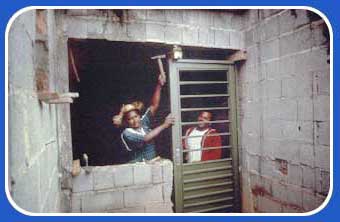
� Maria Luiza M. Carvalho/Panos
Pictures
|
|
� |
|
|
� |
|
|
|
� |
|
| � |
| Did you know
that some of Brazil's greatest football players,
like Pele, Ronaldo and Rivaldo, were born
and brought up in favelas in Brazilian cities?
But not all Brazilians end up as famous footballers!
To find out what sort of jobs people do in
cities like Rio, go to the next page on Brazil's
work and industry. |
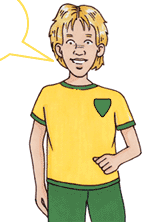 |
|
� |
|
|
� |
|
|
|
� |
|
|
� |
|
|
 |
|
|
